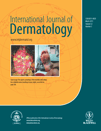Organizing a dermatology service mission
Abstract
Background
There are few published guidelines that describe the forethought and logistical considerations needed to create a dermatology-specific medical mission.
Objective
To report the experience of planning and executing a successful medical mission to an underserved community in Puerto Rico.
Methods
We identified an area of need and projected the volume of patients and diseases to be treated. After recruiting medical staff, pharmaceutical and surgical supplies were collected. Important concerns included establishing the scope of medical and educational services to be rendered, advertising the clinic, arranging for biopsy processing, ensuring follow-up, and selecting a method for medical documentation. We tracked the number of patients seen, diagnoses made, and materials used to prepare for future missions.
Results
We recruited 12 physicians and 25 ancillary (i.e. nonlicensed physician) staff members, including: six dermatologists, four internists, one pathologist, one psychiatrist, 23 medical students, and two medical assistants. We secured 12 examination rooms in an existing medical facility. Two pharmaceutical companies and two pathology companies provided the medications and surgical supplies with the remainder coming from the volunteer physicians' offices. Three thousand dollars were raised and used toward purchasing additional supplies. Advertising via public announcements resulted in the attendance of 166 patients during the 1-day clinic. A total of 41 procedures were performed, including 14 biopsies, five excisions, three incisions and drainage, and 19 electrodessications and curettage.
Conclusion
Proper planning is critical in creating a successful dermatology mission. Documenting the care given and supplies used helps to identify needs and optimize limited resources for future missions. The goal of a self-sustaining public health service starts with patient education and coordination with the local healthcare providers.




